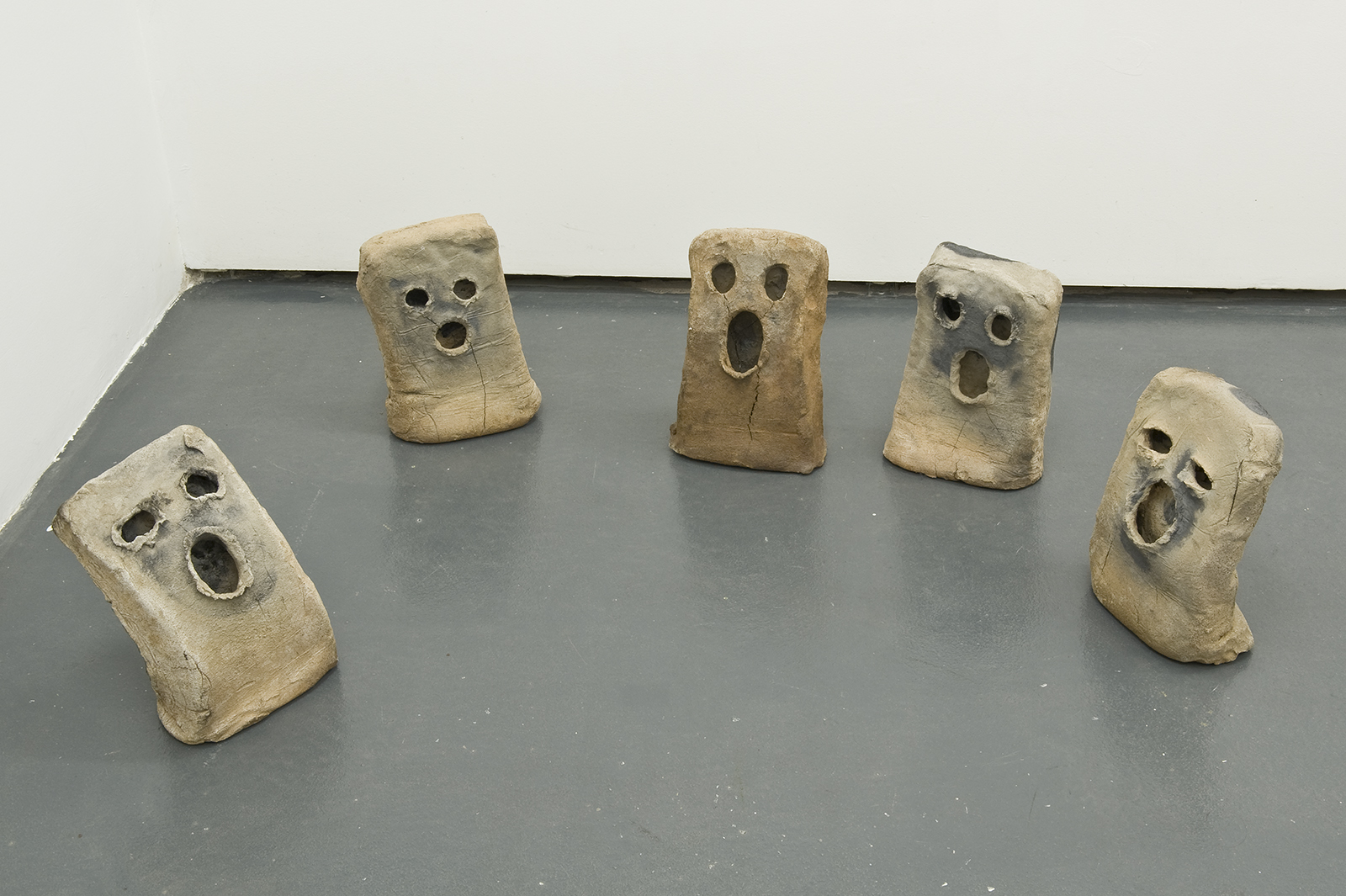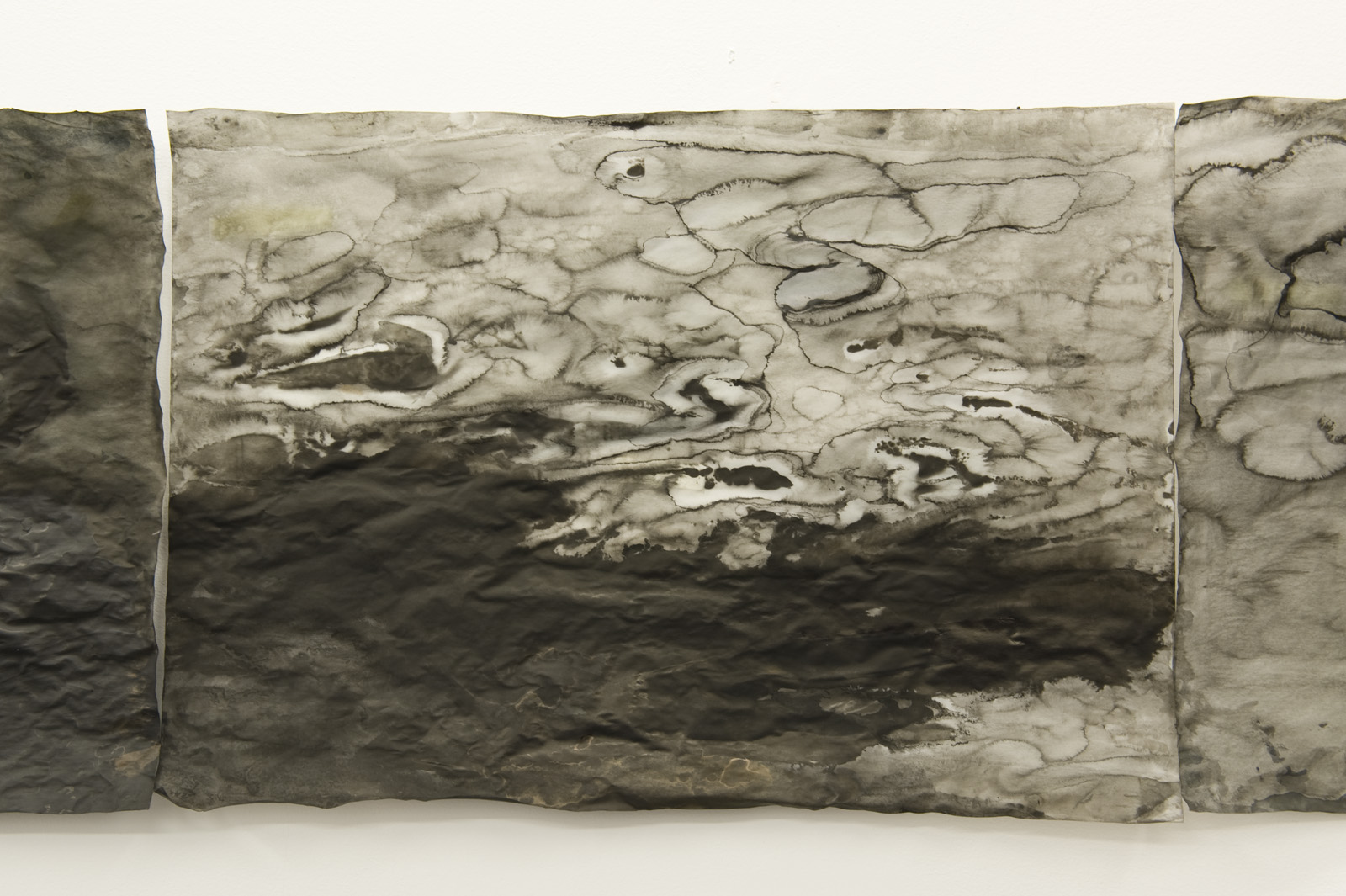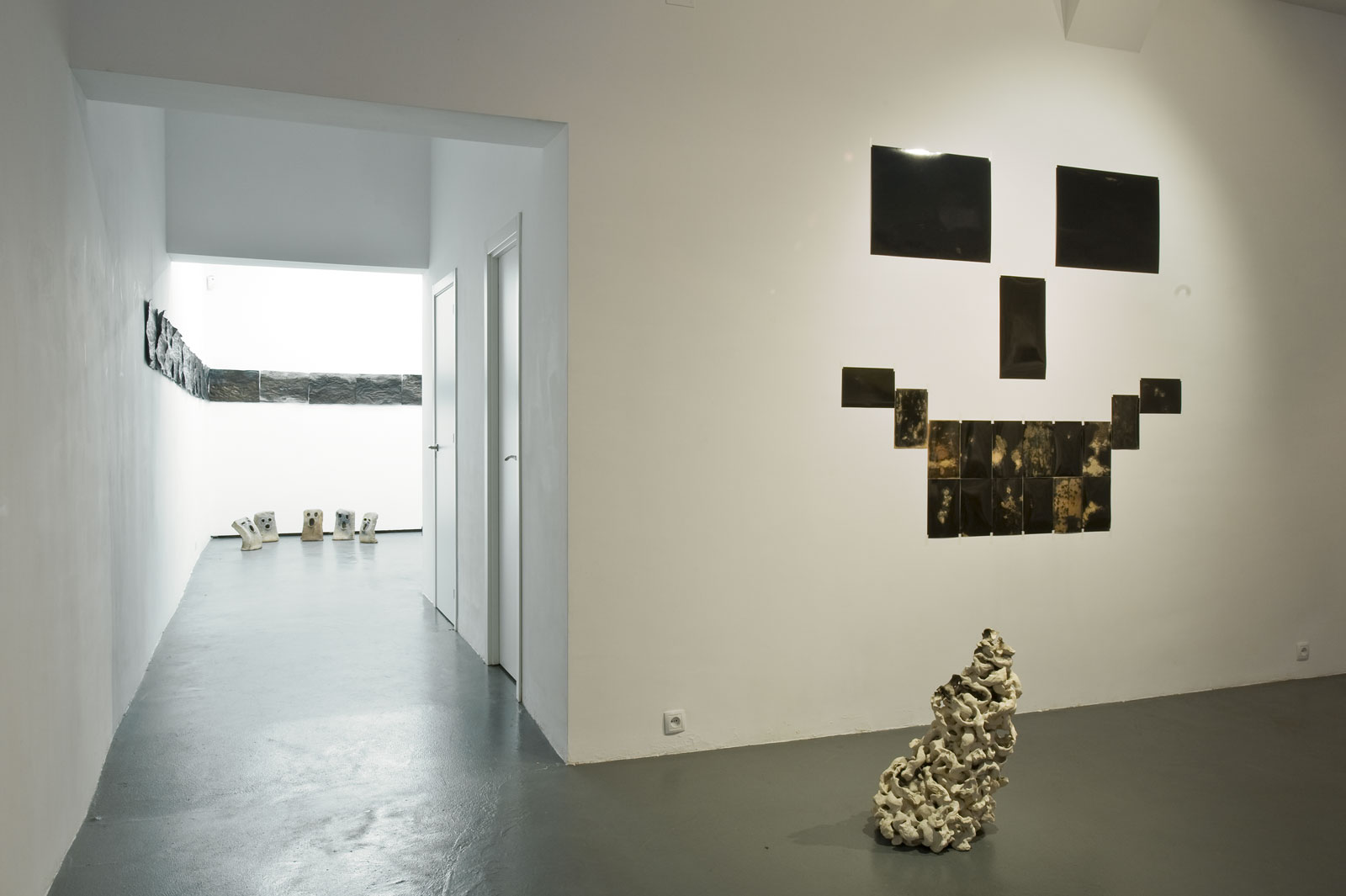Tending to a Last Twenty Seconds and Tending to a Silent Choir (2014)






1 / 6
Tending to a last twenty seconds(2014), ink on cellulose, 34×48 cm each
A timeline composed of twenty ink drawings on cellulose represent twenty tempestuous seconds that give ritual to the end of anything, the last twenty seconds of anything.
To accompany the last twenty seconds of anything, a clay choir sings a silent hymn. One can imagine voices of mourning giving ceremonious solemnity to an end.
Black photographs and ceramics are the center of Maggie Cardelus’s attention for this new body of work, Tending to Black, for Galeria F2.
A black photograph can be seen as an overlay of all images, or as no images at all. It is charged with possibilities and with nothingness. All that can and can’t be photographed is latent in its blackness. Cardelus works with the photo paper emulsion and her x-acto knife to make forms emerge and recede, suggesting the edges of consciousness, of memory, of parallel realities, of carbon, water, life itself and its cycles. Geometries coexist with fluids, flat, industrial surfaces with hand-wrought irregularity, macrocosms with microcosms, and a shadow of the past is cast onto the present order of things.
At the same time, Cardelús has continued her work with ceramics and drawing. Her new ceramics take their cues from the black photographs, but take the ideas to physical tactility of human experience and to the very beginnings of civilisation. Induced to absorb carbon during the firing process, the pieces evoke their intimacy with fire, smoke, and metamorphosis. The drawings, too, are carbon-based fluids that adhere to and deform cellulose paper to create cave-wall surfaces, tempestuous dark seas, and lightless, looming landscapes. Life emerged, and emerges still, from heat, chemical reactions, and time.
Cardelus describes this new body of work as a meditation on beginnings and on blackness: blackness as nothing and blackness as everything. It is a direct response to three years of her helping to curate and install a selection of her work for two museum retrospectives. Because of the strong autobiographical center of her work, and the intimate way it connects to her growing and changing family, she describes this process of looking back over the work she had done since 1997 as a reliving of her family’s transformation. She explains that when she began to think about making new work for this upcoming exhibition at F2, she felt the need to go back to the beginnings of everything, "if such a thing is possible, of course. I started by closing my eyes."